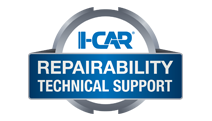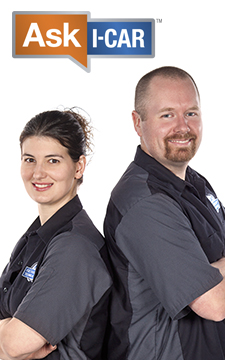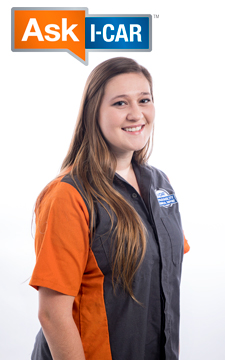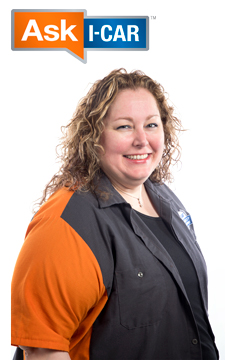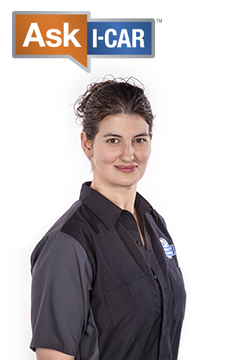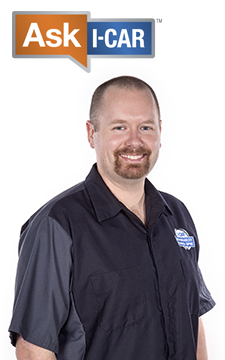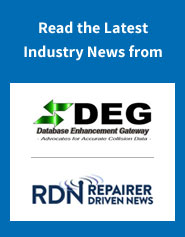Calibration Research Tips: Ford/Lincoln ADAS Suites
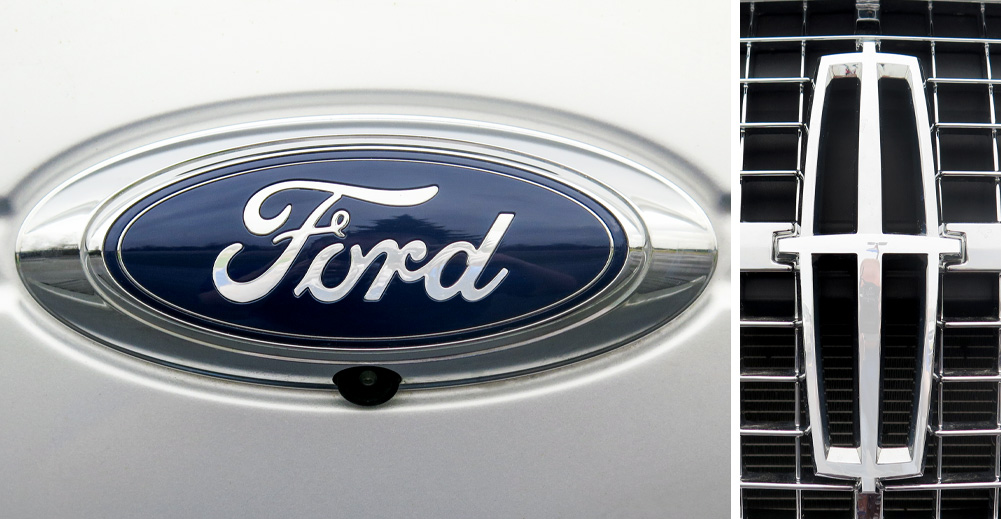
While searching for information on advanced driver assistance systems (ADAS) on an OEM repair information site, you may come across unique calibration procedures or events. These events can vary by year and model, even within a particular make. As the RTS team has been researching these systems, we have been identifying these atypical circumstances. In order to help you better understand them, we are putting together a series of articles that help with the repair and calibration of ADAS. Let’s take a closer look at Ford/Lincoln.
Some Ford and Lincoln vehicles have available systems called:
- Active Drive Assist
- Intelligent Adaptive Cruise Control
- Intelligent Adaptive Cruise Control With Lane Centering
- Adaptive Cruise Control With Lane Centering
These systems are ADAS suites that are made up of a combination of different ADAS. Let’s go into detail about these three ADAS suites.
Active Drive Assist, also known as highway assist, is a suite that maintains the vehicle speed and keeps the vehicle centered in the lane. This system also allows "hands-free" driving in certain situations. The ADAS that is combined to make this suite are:
- Adaptive cruise control (Adaptive Cruise Control)
- Lane keep assist (Lane Keeping System)
Intelligent Adaptive Cruise Control is a suite that maintains and adjusts speed based on speed limit signs on the road. The ADAS that are combined to make this suite are:
- Adaptive cruise control (Adaptive Cruise Control)
- Traffic sign recognition (Speed Sign Recognition)
Intelligent Adaptive Cruise Control With Lane Centering is a suite that maintains and adjusts speed based on speed limit signs on the road, while keeping the vehicle centered in the lane. The ADAS that are combined to make this suite are:
- Adaptive cruise control (Adaptive Cruise Control)
- Traffic sign recognition (Speed Sign Recognition)
- Lane keep assist (Lane Keeping System)
Adaptive Cruise Control With Lane Centering is a suite that maintains vehicle speed while keeping the vehicle centered in the lane. The ADAS that are combined to make this suite are:
- Adaptive cruise control (Adaptive Cruise Control)
- Lane keep assist (Lane Keeping System)
The inputs (cameras/sensors) used for these ADAS suites are:
- Cruise Control Module (CCM), which is a radar sensor that is typically behind the front bumper cover/grille.
- Image Processing Module A (IPMA) Camera, which is a forward-facing camera near the rearview mirror.
Another camera that is typically used for the Active Drive Assist system is the Driver Status Monitor Camera that is a camera mounted in the dash panel that allows the vehicle to monitor the driver's attentiveness.
Understanding Ford/Lincoln ADAS is important when it comes to diagnosis and calibration. It is important to know that all of these systems are working together to form an ADAS package, while sharing a camera and a radar sensor as inputs. This means that if one of the inputs is not calibrated or it is damaged, it can cause more than one system to become inoperative.
Additional I-CAR Collision Repair News you may find helpful:
Related I-CAR Courses
-
Toyota/Lexus/Scion Position Statement: Pre- and Post-Repair System Scanning
Thursday, 28 July 2016
As the industry continues to ask if pre- and post-repair system scanning is necessary, Toyota/Lexus/Scion provides their answer.
-
Pre- and Post-Repair System Scanning Statements
Wednesday, 9 January 2019
Are you wondering if a particular OEM or organization has a published statement on pre-repair and post-repair scanning? We have compiled a list of most of the statements on the subject, so you can...
-
ADAS, Calibration, And Scanning Article Hotspot
Monday, 14 January 2019
Since advanced driver assistance systems (ADAS), scanning, and calibration first started becoming relevant, members of the collision repair industry have required as much knowledge as possible on...
-
Honda/Acura Position Statement: Pre- and Post-Repair System Scanning - UPDATE
Wednesday, 22 May 2019
Honda /Acura has updated their position statement on pre- and post-repair scanning to give more clarification on what is expected for scanning.
-
BMW Position Statement: Pre- and Post-Repair System Scanning - UPDATE
Friday, 10 April 2020
BMW has released a position statement related to pre- and post-repair system scanning. The statement applies to All vehicles equipped with on board diagnostics II (OBD II).
-
Quickly Identifying Outer Quarter Panels w/Rolled Hem Flanges
Monday, 5 March 2018
The I-CAR best practice article, Recycled Outer Quarter Panels w/Rolled Hem Flanges has gotten a lot of interest from the collision repair industry. It’s important to know which vehicles are...
-
General Motors Position Statement: Pre- and Post-Repair System Scanning
Friday, 21 October 2016
As the industry continues to ask, are pre- and post-repair scans necessary, General Motors provides their answer.
-
Restraints Wiring Repairs
Monday, 23 May 2016
Over the past few months, we've been sharing OEM position statements on restraints wiring repairs. Now we're bringing them all together in one place for easy reference.
-
FCA/Stellantis Position Statement: Pre- and Post-Repair System Scanning
Thursday, 9 June 2016
FCA/Stellantis has released a position statement related to pre- and post-repair system scanning.
-
Nissan/INFINITI Position Statement: Pre- and Post-Repair System Scanning - UPDATE
Monday, 14 January 2019
Nissan/INFINITI updated their position statement on pre- and post-repair scanning. The revised position statement touches on more subjects and gives additional information on the subject.
-
Ford/Lincoln Bumper Cover Repairability Position Statement: UPDATE
Thursday, 16 October 2025
Ford/Lincoln released updated position statements about repairing bumper covers on vehicles with advanced driver assistance systems (ADAS).
-
Bumper Cover Repair With ADAS: Ford/Lincoln - UPDATE
Thursday, 16 October 2025
A simple bumper repair on a modern vehicle may not be as simple as it seems. New technologies like blind spot monitoring, adaptive cruise control, and other advanced driver assistance systems (ADAS)...
-
I-CAR Mazda Collision Repair And Electromechanical Repair Overview Courses
Wednesday, 15 October 2025
I-CAR has developed courses that provide an overview of collision repair and electromechanical repair for current Mazda vehicles.
-
Back-To-Basics: Repair Vs. Replace Considerations
Friday, 10 October 2025
Sometimes, going back to the basics can make the difference between a quality repair and a failed repair. Deciding to repair or replace a damaged panel is a daily decision, but it is more...
-
Ford/Lincoln Position Statement: Use Of OEM Glass - UPDATE
Thursday, 9 October 2025
Ford/Lincoln has released updated position statements about the use of OEM glass on their vehicles.
-
I-CAR Repairers Realm: Spot Welding Machine Technology, Setup, And Maintenance - Coming Soon
Wednesday, 8 October 2025
I-CAR is having a discussion on spot welding machine technology, setup, and maintenance.
-
BMW Vehicles On The RTS OEM Calibration Requirements Search
Friday, 3 October 2025
BMW models are now listed in the OEM Calibration Requirements Search page on the RTS website. You're going to notice a difference between other vehicle search results and BMW vehicles. Let’s take a...
-
Ford/Lincoln Position Statement: Pre- And Post-Repair System Scanning - UPDATE
Friday, 3 October 2025
All of the advancements in vehicle technology in recent years have led to Ford and Lincoln position statements on pre- and post-repair scanning. Let’s take a look at the updated guidelines laid out...
-
Body Construction And Material Repair Guidelines: Toyota/Lexus - UPDATE
Tuesday, 30 September 2025
What is the MPa of the front lower rail? What is the outer uniside made of: steel, aluminum, or composite? Can heat be used to straighten or is it cold straightening only? What are the repair...
-
I-CAR Repairers Realm: Ford Explorer Rear Rail Sectioning - Now Available
Friday, 26 September 2025
I-CAR had a discussion on 2020-2025 Ford Explorer rear rail sectioning.
- 2025
- October 2025 (8)
- September 2025 (11)
- August 2025 (12)
- July 2025 (11)
- June 2025 (11)
- May 2025 (11)
- April 2025 (13)
- March 2025 (12)
- February 2025 (11)
- January 2025 (12)
- 2024
- December 2024 (8)
- November 2024 (10)
- October 2024 (13)
- September 2024 (10)
- August 2024 (12)
- July 2024 (11)
- June 2024 (9)
- May 2024 (13)
- April 2024 (12)
- March 2024 (12)
- February 2024 (12)
- January 2024 (10)
- 2023
- December 2023 (8)
- November 2023 (12)
- October 2023 (11)
- September 2023 (11)
- August 2023 (12)
- July 2023 (9)
- June 2023 (11)
- May 2023 (12)
- April 2023 (11)
- March 2023 (12)
- February 2023 (10)
- January 2023 (11)
- 2022
- December 2022 (11)
- November 2022 (12)
- October 2022 (11)
- September 2022 (13)
- August 2022 (11)
- July 2022 (10)
- June 2022 (13)
- May 2022 (11)
- April 2022 (12)
- March 2022 (10)
- February 2022 (11)
- January 2022 (13)
- 2021
- December 2021 (13)
- November 2021 (11)
- October 2021 (13)
- September 2021 (14)
- August 2021 (12)
- July 2021 (15)
- June 2021 (17)
- May 2021 (12)
- April 2021 (14)
- March 2021 (20)
- February 2021 (14)
- January 2021 (14)
- 2020
- December 2020 (13)
- November 2020 (17)
- October 2020 (12)
- September 2020 (14)
- August 2020 (11)
- July 2020 (18)
- June 2020 (15)
- May 2020 (14)
- April 2020 (20)
- March 2020 (12)
- February 2020 (13)
- January 2020 (14)
- 2019
- December 2019 (13)
- November 2019 (19)
- October 2019 (25)
- September 2019 (20)
- August 2019 (22)
- July 2019 (23)
- June 2019 (20)
- May 2019 (19)
- April 2019 (20)
- March 2019 (20)
- February 2019 (18)
- January 2019 (18)
- 2018
- December 2018 (18)
- November 2018 (19)
- October 2018 (17)
- September 2018 (16)
- August 2018 (21)
- July 2018 (20)
- June 2018 (21)
- May 2018 (17)
- April 2018 (19)
- March 2018 (21)
- February 2018 (15)
- January 2018 (20)
- 2017
- December 2017 (13)
- November 2017 (15)
- October 2017 (19)
- September 2017 (20)
- August 2017 (19)
- July 2017 (18)
- June 2017 (19)
- May 2017 (19)
- April 2017 (13)
- March 2017 (18)
- February 2017 (10)
- January 2017 (11)
- 2016
- December 2016 (9)
- November 2016 (14)
- October 2016 (21)
- September 2016 (10)
- August 2016 (11)
- July 2016 (8)
- June 2016 (10)
- May 2016 (5)
- April 2016 (11)
- March 2016 (12)
- February 2016 (10)
- January 2016 (8)
- 2015
- December 2015 (9)
- November 2015 (7)
- October 2015 (8)
- September 2015 (7)
- August 2015 (11)
- July 2015 (7)
- June 2015 (5)
- May 2015 (7)
- April 2015 (8)
- March 2015 (8)
- February 2015 (9)
- January 2015 (10)
- 2014
- December 2014 (12)
- November 2014 (7)
- October 2014 (11)
- September 2014 (10)
- August 2014 (9)
- July 2014 (12)
- June 2014 (9)
- May 2014 (12)
- April 2014 (9)
- March 2014 (6)
- February 2014 (1)
- January 2014 (26)
